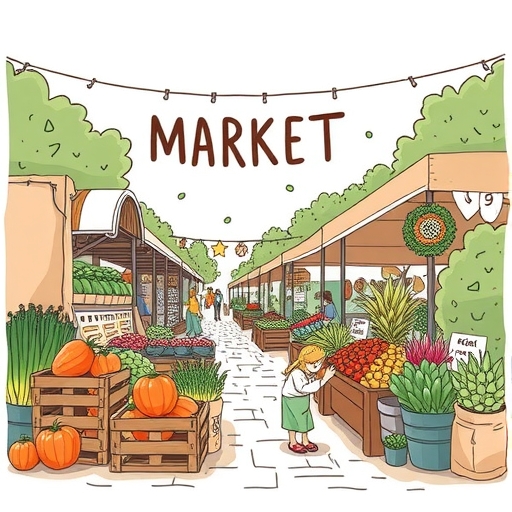Cultivating Returns: A Comprehensive Investor’s Guide to Agricultural Exchange-Traded Funds (ETFs)
Are you looking for an investment opportunity that taps into a fundamental global necessity and offers potential diversification beyond traditional stocks and bonds? We’re talking about the agriculture sector, a cornerstone of human civilization, and how you can invest in it through **Agricultural Exchange-Traded Funds (ETFs)**. These specialized funds offer a unique gateway to an often-overlooked market, appealing to those seeking portfolio diversification, a potential hedge against inflation, and exposure to the enduring global demand for food. In this comprehensive guide, we will delve into the distinct types of agricultural ETFs, dissecting their advantages, inherent risks, and crucial considerations for investors aiming to navigate this dynamic market. From the companies that power agribusiness to the raw commodities that feed the world, understanding these instruments is key to cultivating a robust investment strategy in an ever-evolving economic landscape. 
Understanding the Landscape: Agribusiness vs. Agricultural Commodity ETFs
When we talk about **Agricultural ETFs**, it’s important to recognize that this umbrella term covers two primary categories, each offering a distinct approach to investing in the agriculture sector. Think of it like investing in a car company versus investing in the raw materials, like steel or rubber, needed to build that car.
First, we have **Agribusiness ETFs**. These funds focus on companies involved in the agricultural supply chain, essentially the businesses that make agriculture happen. This includes companies that manufacture farm machinery and equipment (like Ag Growth International Inc. (AFN)), produce fertilizers and pesticides, develop seeds and biotechnology, and engage in food processing and distribution. When you invest in an Agribusiness ETF, you are buying a piece of these companies. Your investment performance is tied to the success and profitability of these businesses, which in turn are influenced by global agricultural trends, but also by general stock market conditions. For example, the **VanEck Agribusiness ETF (MOO)** tracks an index of companies that generate at least 50% of their revenue from agribusiness, covering everything from animal health to agricultural chemicals. Similarly, the **iShares MSCI Global Agriculture Producers ETF (VEGI)** offers exposure to global companies that produce agricultural products. These ETFs often hold a diverse basket of stocks, providing broad exposure to the sector’s corporate side.
Understanding the core differences between these two types of agricultural ETFs is fundamental for aligning your investment with your specific goals and risk tolerance. While both offer exposure to the agriculture sector, their underlying assets and drivers of performance are distinct.
| Feature | Agribusiness ETFs | Agricultural Commodity ETFs |
|---|---|---|
| Underlying Assets | Stocks of companies in the agricultural supply chain (e.g., machinery, seeds, food processing). | Futures contracts for raw agricultural products (e.g., corn, wheat, soybeans, sugar). |
| Primary Exposure | Corporate profitability, innovation, and general stock market conditions. | Direct price movements of raw commodities, influenced by supply/demand. |
| Inflation Hedge | Indirect, through company earnings tied to rising food prices. | More direct, as commodity prices often rise with inflation. |
| Tax Implications | Typically simpler (equity taxation). | Can be complex (e.g., K-1 forms for limited partnerships). |
On the other hand, **Agricultural Commodity ETFs** provide direct exposure to the prices of raw agricultural products through futures contracts. Instead of investing in companies that sell corn, these ETFs aim to track the price of corn itself. This category includes funds dedicated to specific commodities like **Teucrium Wheat Fund (WEAT)**, **Teucrium Corn Fund (CORN)**, **Teucrium Soybean Fund (SOYB)**, and **Teucrium Sugar Fund (CANE)**. There are also broader funds like the **Invesco DB Agriculture Fund (DBA)**, which tracks a basket of several agricultural commodities. These ETFs typically don’t hold the physical commodities; instead, they invest in futures contracts, which are agreements to buy or sell a commodity at a predetermined price at a future date. This direct exposure means their performance is closely tied to the volatile supply-demand dynamics of these raw materials, making them sensitive to factors like weather patterns, geopolitical events, and global economic shifts. Understanding this fundamental difference is the first step to deciding which type of agricultural ETF might align with your investment goals. 
The Upsides and Downsides: Benefits, Risks, and Key Investment Considerations
Investing in agricultural ETFs can bring several compelling benefits to your portfolio, but like any investment, it also comes with its share of risks. Let’s explore both sides before discussing what you should consider.
One of the primary benefits is **portfolio diversification**. By adding agricultural exposure, you can potentially reduce your overall portfolio risk, as the agriculture sector often moves independently of broader equity markets. This means when other parts of your portfolio might be struggling, agricultural investments could be performing well, or vice-versa. Another significant advantage is their potential to act as an **inflation hedge**. Historically, food prices tend to rise during inflationary periods, and agricultural commodities often follow suit. This makes agricultural ETFs, particularly commodity-based ones, an attractive option for investors looking to protect their purchasing power.  Furthermore, these ETFs offer **convenient and accessible exposure** to agricultural markets that would otherwise be difficult or impractical for the average investor to access directly, such as trading futures contracts or buying large tracts of farmland. We also see the benefit of gaining exposure to **global food demand growth**, driven by an ever-increasing world population and rising living standards.
Furthermore, these ETFs offer **convenient and accessible exposure** to agricultural markets that would otherwise be difficult or impractical for the average investor to access directly, such as trading futures contracts or buying large tracts of farmland. We also see the benefit of gaining exposure to **global food demand growth**, driven by an ever-increasing world population and rising living standards.
However, agricultural ETFs are not without their challenges and risks. The most prominent is **volatility**. Agricultural commodity prices are notoriously volatile, influenced by unpredictable factors such as weather conditions (droughts, floods), natural disasters, pest outbreaks, geopolitical tensions (like trade disputes or conflicts in major agricultural regions), and government policies. For Agribusiness ETFs, you also face traditional **stock market risks**, where company-specific issues or broader economic downturns can impact share prices. For commodity ETFs, there’s the added complexity of **derivatives**, specifically futures contracts. These can introduce phenomena like **contango**, where future prices are higher than current prices, which can erode returns over time as contracts are rolled over. Conversely, **backwardation** occurs when future prices are lower, which can be beneficial.
When considering an investment, several factors demand your attention:
* **Expense Ratios and Liquidity:** Always check the **expense ratio** (the annual fee charged by the fund), as high fees can significantly eat into your returns over time. Also, assess the ETF’s **liquidity**, meaning how easily you can buy and sell its shares without significantly impacting the price.
* **Geographical Diversification:** Look at where the ETF’s holdings are concentrated geographically. Do you want exposure to global agriculture, or are you comfortable with a focus on specific regions?
* **Dividend Yield:** Agribusiness ETFs, being composed of stocks, may offer **dividend yields**, providing a source of income. Commodity ETFs typically do not.
* **Environmental, Social, and Governance (ESG) Factors:** For some investors, considering an ETF’s alignment with **ESG factors** is important. Some funds, like VEGI, may have a focus on companies involved in sustainable agriculture or organic farming practices, reflecting growing consumer demand in these areas.
* **Tax Implications:** This is crucial, especially for commodity-based ETFs. Many commodity ETFs are structured as limited partnerships and may issue a **Schedule K-1** for tax purposes, which can complicate tax filing. It’s always wise to consult a tax professional regarding these specific implications.
Beyond these core considerations, potential investors should also evaluate the following aspects for a holistic view:
- **Tracking Error:** How closely does the ETF’s performance match its underlying index or commodity? A high tracking error can indicate inefficiencies.
- **Fund Structure:** Understand if the ETF uses physical holdings, futures, or swap contracts, as this impacts risk exposure and tax treatment.
- **AUM (Assets Under Management):** Larger AUM often correlates with better liquidity and a more established fund, though not always.
While agricultural commodities have historically offered an inflation hedge, some recent research suggests that **energy commodities** might be a more reliable inflation hedge in certain economic environments. This doesn’t negate the value of agricultural exposure but highlights the importance of a balanced perspective.
Here is a summary of the main benefits and risks to help investors quickly assess the agricultural ETF landscape:
| Aspect | Benefits | Risks |
|---|---|---|
| Portfolio Impact | Diversification from traditional assets; potential for uncorrelated returns. | High volatility, especially for commodity-based funds. |
| Economic Conditions | Potential hedge against inflation, as food prices often rise. | Susceptibility to global economic downturns (affecting agribusiness). |
| Market Access | Convenient and accessible way to invest in agriculture without direct farming or futures trading. | Complexities of futures contracts (contango/backwardation) for commodity ETFs. |
| External Factors | Exposure to long-term global food demand growth. | Extreme sensitivity to weather, natural disasters, and geopolitical events. |
| Operational | Managed by professionals, reducing individual stock/commodity research burden. | Expense ratios can erode returns; liquidity concerns for smaller funds. |
Navigating the Market: Top Agricultural ETFs and Alternative Exposure Options
With a clearer understanding of the types and considerations, let’s look at some of the prominent **Agricultural ETFs** available today and explore other ways to gain exposure to this vital sector.
For those interested in the corporate side of the **agriculture sector**, focusing on **Agribusiness ETFs**:
- VanEck Agribusiness ETF (MOO): This is one of the most well-known agribusiness ETFs, tracking companies involved in agricultural chemicals, fertilizers, farm machinery, livestock, and food processing. It offers broad exposure to the global agricultural supply chain.
- iShares MSCI Global Agriculture Producers ETF (VEGI): Similar to MOO, VEGI invests in global companies that produce agricultural products, including those focused on sustainable agriculture and organic farming, aligning with growing consumer preferences for environmentally friendly practices.
- First Trust Indxx Global Agriculture (FTAG): Another option that provides exposure to companies operating in the global agriculture industry, including those involved in crop production, livestock, and agricultural technology.
- BMO Global Agriculture ETF (ZEAT): For Canadian investors, ZEAT provides diversified exposure to global companies that derive a significant portion of their revenue from agriculture-related activities.
If your interest lies in gaining direct exposure to **agricultural commodity prices** through futures contracts, consider these **Agricultural Commodity ETFs**:
- Invesco DB Agriculture Fund (DBA): This fund tracks a diversified basket of agricultural futures contracts, including corn, wheat, soybeans, sugar, coffee, and livestock. It’s a popular choice for broad commodity exposure.
- Teucrium Wheat Fund (WEAT): For targeted exposure to wheat prices.
- Teucrium Corn Fund (CORN): Offers specific exposure to corn prices, which can be influenced by factors like ethanol production and livestock feed demand.
- Teucrium Soybean Fund (SOYB): Provides exposure to soybean prices, a key global crop used for animal feed and oil.
- Teucrium Sugar Fund (CANE): Focuses solely on sugar futures.
- Teucrium Agricultural Fund (TAGS): A broader fund that combines exposure to corn, wheat, soybeans, and sugar.
- Teucrium Agricultural Strategy No K-1 ETF (TILL): This fund attempts to mitigate the complex tax implications (avoiding K-1 forms) often associated with commodity ETFs by using a different structure, making it potentially more appealing for some investors.
Beyond ETFs, there are **alternative avenues for gaining exposure** to the agricultural sector:
- Farmland Investment Alternatives: For those interested in the land itself, **Real Estate Investment Trusts (REITs)** that specialize in farmland can be an option. Companies like Gladstone Land Corp. (LAND) and Farmland Partners Inc. (FPI) own and lease out agricultural land, providing a way to invest in farmland without direct ownership and management. These can offer different risk/return characteristics compared to ETFs.
- Individual Agricultural Stocks: You could also invest in individual companies within the agricultural supply chain. For instance, Ag Growth International Inc. (AFN) is a Canadian company manufacturing grain-handling equipment, which could be part of a broader agricultural investment strategy. However, individual stock picking requires more in-depth research and carries higher idiosyncratic risk compared to diversified ETFs.
Each of these options offers a distinct way to participate in the agricultural market, with varying levels of risk, liquidity, and operational complexity.
The Bigger Picture: Macroeconomic Drivers and Policy Impacts on Agricultural Investments
The performance of **agricultural ETFs** and the broader **agriculture sector** is significantly influenced by a complex interplay of macroeconomic forces, global trends, and governmental policies. Understanding these drivers is crucial for any investor looking to make informed decisions.
Perhaps the most fundamental driver is **global population growth**. As the world’s population continues to expand, so too does the fundamental **demand for food products**. This steady, long-term increase in consumption provides a foundational tailwind for agricultural investments.  Coupled with population growth is the trend of **rising meat consumption in developing nations**. As incomes rise in emerging markets, populations often shift towards diets richer in protein, particularly meat. This increased demand for meat, poultry, and eggs, in turn, drives up the demand for grains like corn and soybeans, which are used as **livestock feed**, thereby exerting upward pressure on grain prices.
Coupled with population growth is the trend of **rising meat consumption in developing nations**. As incomes rise in emerging markets, populations often shift towards diets richer in protein, particularly meat. This increased demand for meat, poultry, and eggs, in turn, drives up the demand for grains like corn and soybeans, which are used as **livestock feed**, thereby exerting upward pressure on grain prices.
Another significant factor is **ethanol production** and associated **government subsidies**. In countries like the United States, a substantial portion of the corn crop is diverted to produce ethanol, a biofuel. Government mandates and subsidies for ethanol production can significantly influence corn prices by reducing the supply available for food and livestock feed. Historically, organizations like the World Bank have called for an end to such subsidies, highlighting their impact on global food prices.
**Industrialization** also plays a dual role. While industrialization can lead to a reduction in **agricultural land** around burgeoning urban centers, it simultaneously increases the demand for higher-quality and processed foods from wealthier urban populations. This creates a supply-demand squeeze that can benefit agricultural producers.
Beyond these fundamental economic shifts, external factors introduce considerable **volatility** into the agriculture market. **Weather patterns** are perhaps the most immediate and impactful, with droughts, floods, and extreme temperatures directly affecting **crop yields** and livestock health. **Geopolitical tensions** and **trade disputes** can disrupt global supply chains, restrict exports, or impose tariffs, dramatically altering commodity prices. For example, conflicts in major grain-producing regions can send global wheat prices soaring. Furthermore, **regulatory changes** related to land use, environmental standards, or import/export policies can also have profound effects on the profitability and stability of agricultural enterprises.
The Organisation for Economic Co-operation and Development (OECD) projects that global demand for agricultural products will grow by approximately 15% over the next decade. This outlook underscores the enduring importance of these macroeconomic and policy considerations for agricultural investors.
To further illustrate the key macroeconomic and policy influences on agricultural investments, here is a breakdown of prominent drivers:
| Driver Category | Specific Factors | Impact on Agriculture |
|---|---|---|
| Demographics | Global Population Growth | Increases fundamental demand for food and agricultural products. |
| Economic Development | Rising Incomes in Developing Nations | Shifts dietary preferences towards higher protein (meat), increasing demand for feed grains. |
| Energy Policy | Biofuel Mandates (e.g., Ethanol) | Diverts crop supply (e.g., corn) from food/feed to fuel, influencing prices. |
| Environmental Factors | Weather Patterns, Climate Change | Directly affects crop yields, livestock health, and commodity supply, leading to price volatility. |
| Geopolitics & Trade | Trade Disputes, Conflicts, Sanctions | Disrupts supply chains, restricts exports, and alters global commodity prices. |
Cultivating Your Portfolio: Strategic Integration and Long-Term Outlook
So, how do **agricultural ETFs** fit into your broader investment strategy? For many investors, these funds are best viewed as a **strategic portfolio addition** rather than a core holding. Financial experts often suggest limiting exposure to the agriculture sector to a modest percentage, perhaps around **5% to 10% of a diversified portfolio**. This approach allows you to harness the benefits of diversification and inflation hedging without over-exposing yourself to the sector’s inherent volatility.
To effectively integrate agricultural ETFs into your portfolio, consider these strategic points:
- **Balance and Diversify:** Combine agribusiness ETFs with commodity ETFs to spread risk across different agricultural market segments.
- **Long-Term Horizon:** Given the cyclical nature and volatility, a long-term investment perspective is often more suitable for agricultural exposure.
- **Regular Review:** Periodically re-evaluate your allocation to agricultural ETFs based on market conditions, global trends, and your overall portfolio goals.
The **long-term appeal** of agricultural investments is compelling, rooted in irrefutable global trends. The fundamental **global demand for food** is not going away; it is set to increase steadily with population growth. This enduring need provides a robust foundation for the sector’s growth. Moreover, **innovation in farming technology** and the adoption of **sustainable practices** are poised to drive efficiency and productivity. Advancements in precision agriculture, biotechnology, and water management can help meet rising demand while addressing environmental concerns. We also see a growing consumer preference for organic and sustainably produced foods, creating new market segments and growth opportunities that ETFs like the iShares MSCI Global Agriculture Producers ETF (VEGI) aim to capture.
While disruptive, **climate and weather events** also underscore the sector’s unique dynamics. Periods of scarcity due to adverse weather can lead to significant price spikes, generating substantial returns for those invested in agricultural commodities, albeit with heightened risk. This highlights the sector’s potential as a hedge against unexpected shocks to the food supply.
In summary, incorporating agricultural ETFs into your portfolio can be a smart move for **diversification** and as an **inflation hedge**. However, given the sector’s susceptibility to various external factors, **due diligence** is paramount. Always research the specific ETF’s holdings, expense ratio, and structure. Understand the macroeconomic drivers and potential policy impacts. By taking a thoughtful, informed approach, you can strategically position your portfolio to potentially benefit from the enduring and growing importance of the global agriculture sector.
Conclusion
In conclusion, **Agricultural Exchange-Traded Funds (ETFs)** present a versatile and essential investment opportunity, enabling investors to tap into a sector driven by fundamental global needs. Whether through the stability of **agribusiness firms** that power the supply chain or the direct **commodity exposure** offered by futures-based funds, these ETFs can serve as valuable tools for **inflation hedging** and **portfolio diversification**. We’ve explored how Agribusiness ETFs invest in companies like those making farm equipment or processing food, while Agricultural Commodity ETFs track the raw prices of goods like corn and wheat using futures contracts.
While inherent volatilities stemming from weather, geopolitics, and trade policies, alongside specific tax considerations, necessitate careful **due diligence**, the enduring global demand for food, coupled with advancements in **agricultural technology** and sustainable practices, firmly positions agricultural ETFs as a compelling component of a well-rounded investment strategy for the long term. By understanding the distinct characteristics of these funds and their underlying drivers, you can make informed decisions to potentially cultivate growth within your own investment portfolio.
Disclaimer: This article is for informational and educational purposes only and does not constitute financial advice. Investing in agricultural ETFs or any financial instrument involves risks, including the potential loss of principal. Please consult with a qualified financial advisor before making any investment decisions.
Frequently Asked Questions (FAQ)
Q: What is the primary distinction between Agribusiness ETFs and Agricultural Commodity ETFs?
A: Agribusiness ETFs invest in the stocks of companies involved in the agricultural supply chain, such as manufacturers of farm equipment, seed producers, or food processors. In contrast, Agricultural Commodity ETFs provide direct exposure to the price movements of raw agricultural products like corn, wheat, or soybeans, typically through futures contracts.
Q: What are some of the key benefits of including Agricultural ETFs in an investment portfolio?
A: The main benefits include portfolio diversification, as the sector can perform independently of broader markets, and potential inflation hedging, as food and commodity prices often rise during inflationary periods. They also offer convenient access to otherwise complex agricultural markets and exposure to the long-term growth in global food demand.
Q: What are the significant risks investors should be aware of when considering Agricultural ETFs?
A: Agricultural ETFs are subject to high volatility, primarily due to unpredictable factors like adverse weather conditions, natural disasters, geopolitical events, and trade disputes. Commodity ETFs also carry risks associated with futures contracts, such as contango, which can erode returns, while agribusiness ETFs face general stock market and company-specific risks.



No responses yet